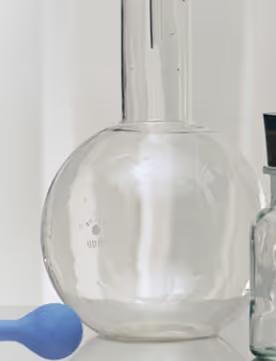Stelara is an effective addition to the medication options for patients with autoimmune disease, but the sheer number of medication options out there can be overwhelming. Perhaps your health care provider has suggested Stelara as a potential treatment option for you, or maybe you’re investigating your options and want to know more about it. In this article, we’ll explain what Stelara is, what it is used for, how to use it, and its side effects. We’ll also go over some potential alternative or complementary approaches to Stelara, so you can be well informed about all your options.
What Is Stelara?
Stelara, the brand name for the generic ustekinumab, is a prescription medication that helps control inflammation in your body. Stelara, or Ustekinumab, does this by blocking the action of two pro-inflammatory proteins, interleukin-12 and interleukin-23, which are thought to play an important role in the increased inflammation seen in some autoimmune conditions. Ustekinumab is currently the only medication approved by the U.S. Food and Drug Administration (FDA) that targets interleukin-12 and interleukin-23. (Source, Source, Source)

Importantly, while ustekinumab helps improve symptoms, it doesn’t cure autoimmune diseases. This isn’t a limitation specific to ustekinumab — all autoimmune medications work to reduce symptoms, as autoimmune diseases cannot currently be cured.
Stelara is likely not the first medication you will try for your autoimmune condition, but it may be your first biologic medication. A biologic medication is a drug that is derived from biological sources, such as living cells or tissues, in a complex combination. This is different from a conventional medicine, such ibuprofen, which is synthesized from non-biological chemicals. This difference in source does not affect the safety or effectiveness of the drug — in fact, biologics are often the cutting-edge of medicine. (Source)
What Is Stelara Used For?
Ustekinumab can be used to manage symptoms in a number of different medical conditions, all of which are autoimmune related. We don’t know the exact cause of these autoimmune conditions, but studies suggest that an overactive immune response is a big contributor. By decreasing inflammation, ustekinumab can provide temporary relief. (Source)

Plaque Psoriasis
Plaque psoriasis is the most common type of psoriasis, and is characterized by scaly, itchy, raised patches on your skin. These plaques often appear on the knees, scalp, lower back, and elbows, but can really show up anywhere on the body. As plaque psoriasis progresses, patients may also develop swelling in the joints. (Source, Source)
Psoriatic Arthritis
Psoriatic arthritis is a form of arthritis that is associated with psoriasis. It generally develops after the red, scaly patches typical to psoriasis, but the skin lesions don’t always show up first. Symptoms of psoriatic arthritis can include:
- swollen joints
- stiffness in joints
- joint pain
- swollen fingers or toes
- stiffness and pain in the lower back
(Source)
Use of Stelara to help with psoriatic arthritis is somewhat recent, having been approved by the FDA for this use in 2022. (Source)
Crohn’s Disease
Crohn’s disease is a type of inflammatory bowel disease that can affect any part of the digestive tract. Symptoms of Crohn’s disease can vary from person to person, but common symptoms include:
- constipation
- cramping
- diarrhea
- abdominal pain
- weight loss
- fatigue
(Source)
Ulcerative Colitis
Ulcerative colitis is another type of inflammatory bowel disease that affects the large intestine and rectum. Symptoms of ulcerative colitis can be similar to Crohn’s disease, such as:
- diarrhea
- abdominal pain
- weight loss
- fatigue
- rectal pain/bleeding
(Source)

How Long Will Stelara Take To Work?
Everyone’s experience will be different, but we can look at the results of clinical studies to get an idea of what you might experience.
In clinical studies of ustekinumab in patients with plaque psoriasis, participants saw a noticeable improvement in their skin after 12 weeks. In studies of patients with psoriatic arthritis, many patients had an improvement in their joint and skin symptoms after 24 weeks. (Source)
In clinical studies of ustekinumab in patients with Crohn’s disease, over half of the patients studied reported improvement in their symptoms after 6 weeks. Some patients even experienced remission (meaning having very few or no symptoms) within 3 weeks. However, the official guidelines for ustekinumab say to expect symptom improvement after around 8 weeks of treatment. (Source, Source)

.avif)
%20(1).avif)
%20(1).avif)

.avif)




.avif)


.avif)
.avif)





.avif)

%2520(1).avif)


